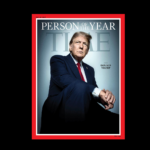Trump’s Tariff Bombshell: Auto Industry Braces for a Seismic Shift
White House Confirms Trump’s Impending Auto Tariff Announcement: A Deep Dive
Washington, D.C. – March 26, 2025 – The White House has officially confirmed that President Donald Trump will unveil a significant new policy on automotive tariffs during a press conference scheduled for 4:00 p.m. ET today from the Oval Office. This announcement, teased earlier this week by Trump himself, marks a pivotal escalation in his administration’s aggressive trade agenda, which has already rattled global markets and sparked intense debate over its economic implications. White House Press Secretary Karoline Leavitt made the confirmation during a morning briefing, leaving the specifics of the tariffs—such as their rate, scope, and implementation timeline—to be detailed by the President later today. As the clock ticks toward the announcement, the auto industry, financial markets, and international trade partners are bracing for impact.
Background: Trump’s Trade War Intensifies
Since reclaiming the presidency on January 20, 2025, Trump has wasted no time in reviving his signature protectionist trade policies. His first term saw the imposition of tariffs on steel, aluminum, and a wide range of Chinese goods, often justified as measures to protect American jobs and national security. This term, however, appears to be taking those efforts to new heights. Earlier this month, Trump imposed 25% tariffs on steel and aluminum imports from all countries and a 20% blanket tariff on Chinese goods, citing issues like fentanyl trafficking and intellectual property theft. He also threatened reciprocal tariffs—matching the levies foreign countries impose on U.S. exports—set to take effect on April 2, a date he has dubbed “Liberation Day” for American trade.
The auto tariff announcement, however, is distinct from the broader reciprocal tariff plan. Trump hinted at this move on Monday, March 24, during a Cabinet meeting, saying, “We are going to be doing automobiles, which you’ve known about for a long time … We’ll be announcing that fairly soon, over the next few days probably.” The decision to expedite the auto tariffs ahead of the April 2 deadline underscores the administration’s focus on the automotive sector, a cornerstone of U.S. manufacturing that Trump has long argued is unfairly disadvantaged by foreign competition.
What to Expect from the Announcement
While Leavitt declined to preempt the President’s remarks, speculation is rife about the scope and scale of the tariffs. In February, Trump floated the idea of a 25% tariff on imported vehicles, a figure consistent with his earlier rhetoric and the tariffs he imposed on Canadian and Mexican goods earlier this month (later delayed by one month after lobbying from U.S. automakers). Industry insiders and former officials expect the administration to lean on a Section 232 investigation from Trump’s first term, which deemed auto imports a potential threat to national security—a legal justification that could bypass Congressional approval.
One key question is whether the tariffs will apply solely to finished vehicles or extend to auto parts, which form a critical part of the global supply chain. A source familiar with the matter, cited by The New York Times, suggested that auto parts might be exempted to mitigate the impact on repair and maintenance sectors, though this remains unconfirmed. The U.S.-Canada-Mexico Agreement (USMCA), renegotiated during Trump’s first term, could also complicate matters, as it allows for largely duty-free trade among the three nations—yet Trump has shown willingness to override such agreements when it suits his agenda, as seen with his earlier threats against Canada and Mexico over fentanyl smuggling.
Economic Stakes: Winners and Losers
The White House frames the tariffs as a boon for domestic manufacturing, arguing that taxing foreign-made cars will incentivize companies to relocate production to the U.S. “We’re going to go with the tariffs on cars,” Trump said at a White House event earlier today, reinforcing his belief that such measures will “make America rich again.” He has long pointed to disparities in trade policies—like the European Union’s 10% duty on U.S. vehicle imports versus the U.S.’s 2.5% tariff on passenger cars—as evidence of an uneven playing field.
However, the auto industry and economic analysts paint a more complex picture. The U.S. automotive sector relies heavily on imported parts, even for vehicles assembled domestically. A 25% tariff on finished vehicles could raise car prices by thousands of dollars—potentially up to $12,000 for electric vehicles, according to some automaker estimates—disrupting supply chains and squeezing consumers already grappling with inflation. The Center for Automotive Research warns that such tariffs could lead to reduced production, tighter supply, and job losses, with ripple effects across the one million Americans employed in auto manufacturing and the two million working at dealerships.
Stock markets reflected this unease today, with the S&P 500 dropping over 1% and shares of major automakers like General Motors (-2.8%), Ford (-0.2%), and Stellantis (-2%) sliding after Leavitt’s briefing. Tesla, a domestic producer, saw a milder dip of 1.7%, suggesting it might fare better under a tariff regime, though its reliance on imported components could still pose challenges.
Global Reactions and Retaliation Risks
Internationally, the announcement has heightened tensions with key trading partners. Canada, which sends 75% of its exports to the U.S., has already threatened retaliatory tariffs on $107 billion worth of American goods if Trump follows through. Prime Minister Justin Trudeau urged reconsideration during a Monday call with Trump, to little avail. Mexico, similarly dependent on U.S. trade, faces potential economic fallout, while the European Union and Japan—major auto exporters—may also respond with counter-measures, risking a broader trade war.
China, already under a 20% tariff increase, could see further escalation if its auto exports (though currently minimal to the U.S.) are targeted. Beijing’s state-backed Global Times hinted at retaliatory tariffs on U.S. agricultural products, a move that could hit American farmers hard.
Political and Public Implications
Domestically, the tariffs are a double-edged sword for Trump. They fulfill a campaign promise to prioritize American workers, resonating with his base in manufacturing-heavy states like Michigan and Ohio. Yet, the potential for higher car prices—often a family’s largest purchase after a home—could fuel political blowback, especially if inflation, a key voter concern, ticks upward. Senate Minority Leader Chuck Schumer seized on this today, questioning, “How can Americans feel confident when Donald Trump starts, stops, starts, and changes his position on tariffs?”
The announcement also comes amid other controversies, including a lawsuit from The Associated Press against Leavitt and two other officials over alleged press retaliation, adding to the administration’s turbulent early months.
Looking Ahead
As 4:00 p.m. ET approaches, all eyes are on Trump’s Oval Office address. Will he stick to the 25% figure he’s hinted at, or surprise with a higher or lower rate? Will exemptions for USMCA partners or auto parts soften the blow, or will he double down on a hardline stance? The answers will shape not only the auto industry but also the trajectory of Trump’s economic legacy—and the global trade landscape—for years to come.
For now, the markets wait, the industry braces, and the world watches. Stay tuned for live updates as this story develops.


